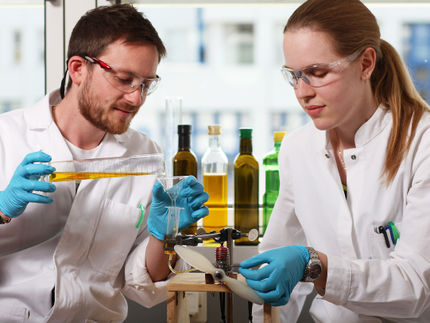Scientists develop diesel that emits far less CO2
Researchers from KU Leuven and Utrecht University have discovered a new approach to the production of fuels. Their new method can be used to produce much cleaner diesel. It can quickly be scaled up for industrial use. In 5 to 10 years, we may see the first cars driven by this new clean diesel.
The production of fuel involves the use of catalysts. These substances trigger the chemical reactions that convert raw material into fuel. In the case of diesel, small catalyst granules are added to the raw material to sufficiently change the molecules of the raw material to produce useable fuel.
Catalysts can have one or more chemical functions. The catalyst that was used for this particular study has two functions, represented by two different materials: a metal (platinum) and a solid-state acid. During the production process for diesel, the molecules bounce to and fro between the metal and the acid. Each time a molecule comes into contact with one of the materials, it changes a little bit. At the end of the process, the molecules are ready to be used for diesel fuel.
The assumption has always been that the metal and the solid-state acid in the catalyst should be as close together as possible. That would speed up the production process by helping the molecules bounce to and fro more quickly. Professor Johan Martens (KU Leuven) and Professor Krijn de Jong (Utrecht University) have now discovered that this assumption is incorrect. If the functions within a catalyst are nanometres apart, the process yields better molecules for cleaner fuel.
"Our results are the exact opposite of what we had expected. At first, we thought that the samples had been switched or that something was wrong with our analysis", says Professor Martens. "We repeated the experiments three times, only to arrive at the same conclusion: the current theory is wrong. There has to be a minimum distance between the functions within a catalyst. This goes against what the industry has been doing for the past 50 years."
The new method can optimise quite a few molecules in diesel. Cars that are driven by this clean diesel would emit far fewer particulates and CO2 . The researchers believe that their method can be scaled up for industrial use with relative ease, so the new diesel could be used in cars in 5 to 10 years.
The new technique can be applied to petroleum-based fuels, but also to renewable carbon from biomass.
Original publication
Other news from the department science

Get the chemical industry in your inbox
By submitting this form you agree that LUMITOS AG will send you the newsletter(s) selected above by email. Your data will not be passed on to third parties. Your data will be stored and processed in accordance with our data protection regulations. LUMITOS may contact you by email for the purpose of advertising or market and opinion surveys. You can revoke your consent at any time without giving reasons to LUMITOS AG, Ernst-Augustin-Str. 2, 12489 Berlin, Germany or by e-mail at revoke@lumitos.com with effect for the future. In addition, each email contains a link to unsubscribe from the corresponding newsletter.

























































